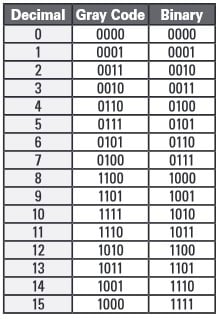Shafted Rotary Encoders
Dynapar offers a wide range of shafted rotary encoders that mount to a motor or driven shaft via a flexible coupling.
Learn More
Other Categories
Optical Rotary Encoders
Magnetic Rotary Encoders
Hollow-Shaft Encoders
Hub-Shaft Encoders
Shaft Encoders
Miniature Encoders
Hazardous Area Encoders
Non Contact Encoders
Bearingless Encoders
Ethernet Protocol Encoders
Service & Support Overview
Product Quicklinks
Competitor Parts List
Discontinued Encoder Guide
Literature Library
RMA Request
Technical Support
Product Manuals & Installation Guides
Knowledge Center
Technology
How to Choose Feedback
Application Examples
Case Studies
Encoder Issues and Troubleshooting
White Paper Downloads
Literature Library
Power Point Downloads
Videos
Featured Links
Motor Encoders
Quadrature Encoders
Optical Encoders
Magnetic Encoders
How to Specify a Resolver
Draw Wire Encoders
Hall Effect Encoders
Encoder Accuracy vs Resolution
What are Gray code encoders? Also known as reflected binary code encoders, gray code encoders are designed to enhance accuracy and reduce communication errors by changing only one bit at a time. Ideal for serial and parallel communication protocols, gray code ensures reliable data transmission in various applications. Learn more about the benefits and top-rated gray code encoders for your system needs.

Parallel encoder output delivers a rapid stream of bits. When the data is in binary format, multiple bits can change per step, and in some cases, all bits may alter between each read. In high-speed applications, this can lead to errors or complex programming challenges. Gray code minimizes the bit change to just one data bit per measurement step.
Table: Example of conversion between straight binary and gray code encoder output.
Gray code rotary encoders are used in various applications where precise position measurement and minimizing errors are crucial. Here are some typical applications:
These applications benefit from gray code's unique property of changing only one bit at a time, which minimizes the risk of errors during state transitions.
Is there a specific application you're interested in learning more about?
Parallel output makes all output bits available simultaneously. It may be provided as straight binary or transformed into gray code to reduce errors.
The advantage of parallel output is that it’s fast: all the data is available in real time, all the time. Disadvantages include bulky (and expensive) cables and limited cable length. Most encoders come with cables a meter or two long, but a parallel output using differential output (push-pull) and shielded cabling can be extended to 100 m using a thicker cable, at a reduction in speed. Open-collector (sinking or sourcing) outputs can go roughly a third that far.
The alternative to parallel communication is serial. SSI requires less cabling for data transfer, the same interface hardware regardless of the absolute encoder’s resolution and less electronic components.
There are several dedicated serial buses available including SSI and BiSS, as well as standard industrial buses including DeviceNet, CAN Bus, Profibus and Interbus. Tradeoffs among these include bandwidth, update rate, hardware requirements, wire count, proprietary vs. nonproprietary nature, and availability.
© Copyright Dynapar 2025 All Rights Reserved